Almost every visitor to Meghalaya makes a pilgrimage to the enchanting Mawsymai Caves, also known as Mawlong Syiem. This is a popular spot for tourists, and I couldn’t resist visiting it myself! But on the journey, something unexpected caught my eye. Have you ever noticed the towering boulders stacked atop one another as you travel through the Khasi and Jaintia hills? I was curious about them too. Were they just random rocks or did they have some hidden meaning? That’s when I decided to dig a little deeper into the story of these monoliths.
While driving through the hills, I kept spotting large and small stones stacked together in mysterious formations. These stones are called monoliths or narut in the Garo language. People often think they are burial stones, but each monolith actually has its own unique story. And when you hear the stories, you realize how rich the culture and history of Meghalaya truly are.
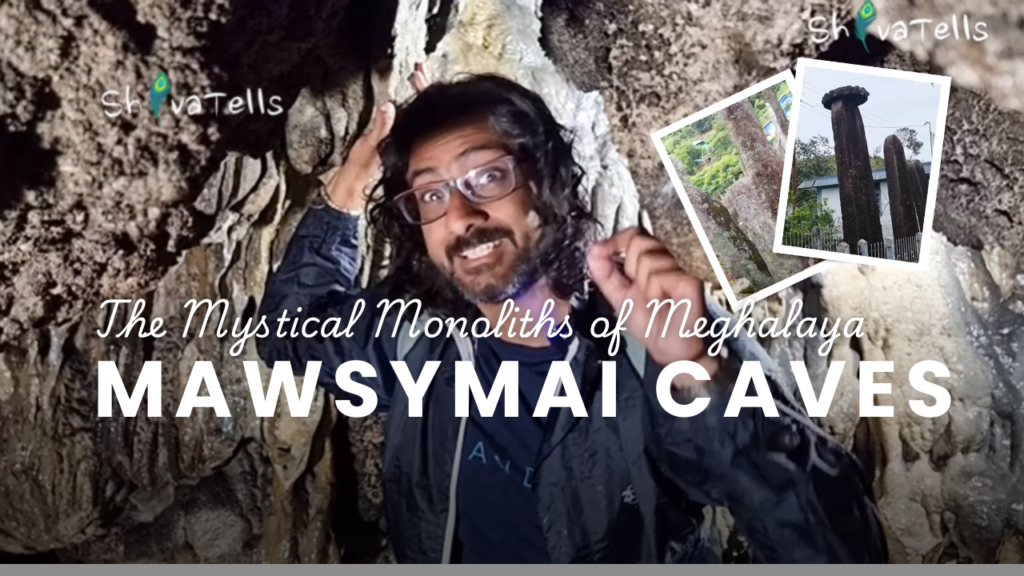
Table of Contents
The Two Types of Monoliths
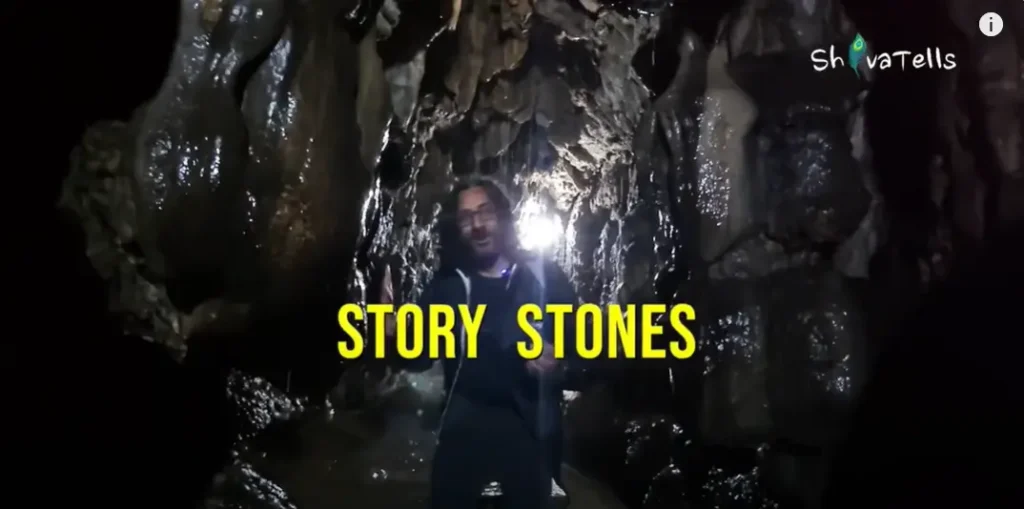
In Meghalaya, there are mainly two types of monoliths. The first is Ammonium, which is erected to commemorate important events like promises or victories. The second type is the Monument, which marks rituals related to death and burial. I learned this fascinating information during a meeting with the Chief Minister of Meghalaya. He explained that these stones were a way of preserving history in a place where legends are more alive than written records.
A Journey Through History
My travels took me through several villages where these monoliths stand proudly. Each village had its own legend, and I felt like I was traveling back in time with every story I heard. One monolith was erected to mark a once-thriving kingdom, and it stood as a reminder of a glorious past. Another was placed in memory of a devastating earthquake that hit in 1897, shaking the region and changing many lives forever.
But the story that truly gave me chills was of a monolith perched on a dangerous cliff. It was linked to an old legend of betrayal. Standing before that stone, looking out over the vast landscape, I could almost feel the weight of that tragic tale. It’s moments like these that make me love traveling—the feeling that you’re standing in the middle of something ancient and powerful, where history whispers through the stones.
The Enchanting Mawsymai Caves
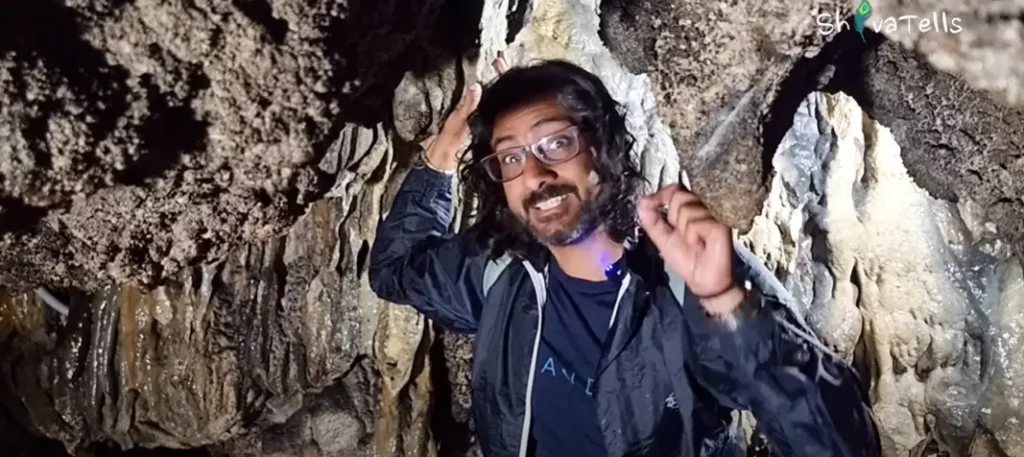
Now, let’s talk about the main star of my journey—Mawsymai Caves! The caves are a natural wonder, filled with stalactites and stalagmites that seem to glow as you explore deeper inside. The caves are narrow in some places, which adds to the sense of adventure, and at times, you have to crawl through tight spaces. But it’s all worth it! The formations inside the caves look like something out of a fantasy world.
When I reached the caves, I was amazed by the beauty of nature’s work. The entrance itself felt like a gateway to a hidden world. Inside, the damp air and the quiet echoed the stories of the stones I had encountered earlier. As I ventured deeper into the caves, I couldn’t help but think about the monoliths and their significance. They seemed connected somehow to the mystery of this land.
Also read – Garo Hills and Nakama Caves: Meghalaya’s Hidden Gem
How to Travel to Mawsymai Caves
Getting to Mawsymai Caves is quite easy! If you’re coming from Shillong, the capital of Meghalaya, it’s only about 58 kilometers away. You can either take a local bus or hire a taxi. The ride is smooth and scenic, as you pass through green hills and mist-covered valleys. If you’re driving, it will take around 2 hours, depending on the road conditions. The best time to visit the caves is during the summer months when the weather is pleasant.
Nearby Tourist Places to Visit
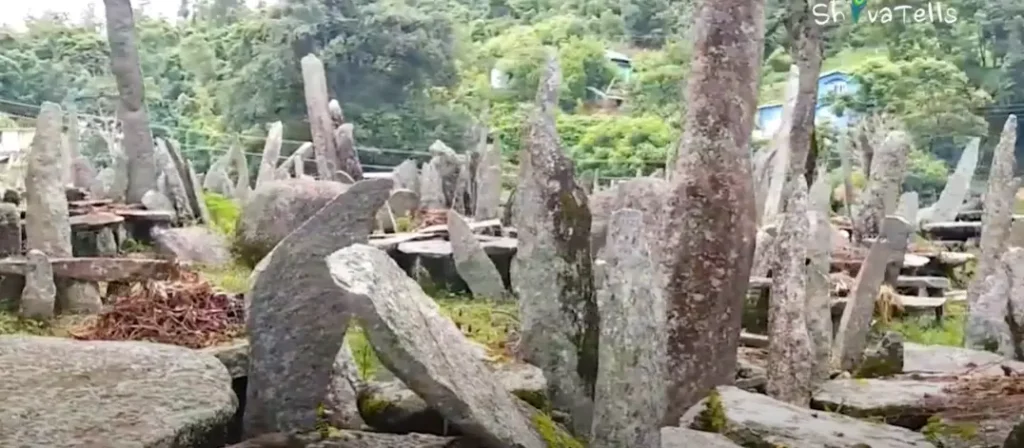
When visiting Mawsymai Caves, you’re already in one of the most beautiful regions of Meghalaya, filled with natural wonders. Apart from the mesmerizing caves, there are several other stunning spots in the vicinity that you should not miss. Each place adds its own unique charm to your Meghalaya trip, making it an unforgettable experience. Here are some of the nearby attractions:
Nohkalikai Falls
One of the most iconic landmarks in Meghalaya, Nohkalikai Falls is the tallest plunge waterfall in India, cascading from a height of 340 meters (1,115 feet). Just a short drive from the Mawsymai Caves, this breathtaking waterfall is a must-see for every nature lover. The sight of the water plunging down into a turquoise pool below, surrounded by lush green cliffs, is something that will leave you in awe.
The name Nohkalikai comes from a tragic local legend. According to the story, a woman named Likai jumped off the cliff after discovering that her husband had killed her daughter. Her grief led her to take her own life, and the waterfall was named in her memory. Despite the sad tale, the beauty of the waterfall is undeniable.
If you visit during the monsoon season, the waterfall is in its full glory, with a powerful flow and mist rising high into the air. There’s also a viewing gallery that offers a panoramic view of the falls and the surrounding landscape. Don’t forget to bring your camera because the views are truly picture-perfect!
Living Root Bridges
Another must-visit spot near the Mawsymai Caves is the famous Living Root Bridges in Cherrapunjee, also known as Sohra. These unique bridges are made from the roots of the Ficus elastica tree, which the Khasi people have skillfully woven together over many years. Some of these bridges are centuries old, yet they remain strong and sturdy, capable of carrying the weight of several people at once.
The most famous of these bridges is the Double Decker Living Root Bridge in Nongriat village, which is a bit of a trek to reach but absolutely worth the effort. The hike down to Nongriat is about 3,500 steps, so make sure you’re prepared with good walking shoes and plenty of water. Along the way, you’ll be treated to stunning views of the hills, valleys, and rivers, making the trek an adventure in itself.
Visiting the Living Root Bridges is a unique experience, as these structures are a perfect example of human harmony with nature. They aren’t just bridges but also a testament to the indigenous Khasi tribe’s ingenuity and respect for the environment.
Seven Sisters Waterfalls
Another natural wonder in the area is the Seven Sisters Waterfalls, also known as Nohsngithiang Falls. As the name suggests, this waterfall is made up of seven different streams cascading side by side down the cliffs of the East Khasi Hills. It’s one of the tallest waterfalls in India, with a height of 315 meters (1,033 feet), and is especially beautiful during the rainy season when all seven streams are flowing in full force.
The falls are best viewed from a distance, allowing you to take in the sheer size and majesty of this natural wonder. The sight of the seven streams flowing down together against the backdrop of the green hills is a moment to cherish. The best time to visit is during the monsoon, as the falls are at their peak during this time, with the water plunging down dramatically into the gorge below.
Laitlum Canyons
If you’re up for a bit of trekking and want to experience breathtaking views, the Laitlum Canyons are the perfect destination for you. The name Laitlum means “end of hills,” and it truly feels like you’re standing at the edge of the world when you reach the viewpoint. The panoramic views of the surrounding hills and valleys from the top are simply stunning.
Located about 25 kilometers from Shillong, this place is still relatively untouched by heavy tourism, which means you can enjoy the peace and serenity of the landscape without large crowds. The trek to the top is moderately challenging, but the views from the summit make it completely worth it. Once you reach the top, you can sit and admire the rolling hills, deep gorges, and the tiny villages scattered across the valley below.
The Laitlum Canyons are perfect for those who love adventure and want to immerse themselves in Meghalaya’s natural beauty. It’s also an ideal spot for photographers, as the vistas change dramatically depending on the time of day, offering stunning opportunities to capture the beauty of the hills.
Mawlynnong Village
Known as the Cleanest Village in Asia, Mawlynnong is a beautiful and eco-friendly village located about 90 kilometers from Cherrapunjee. It’s a great place to visit if you’re looking for a peaceful and relaxing experience. The village is known for its cleanliness and the environmentally conscious practices of the local Khasi tribe. Every house in the village has its own compost pit, and the streets are lined with beautiful flowers, making it feel like you’ve stepped into a fairytale.
Mawlynnong is also home to another Living Root Bridge, which is much easier to access compared to the one in Nongriat. The village offers a glimpse into sustainable living and is a great place to experience the warm hospitality of the Khasi people.
Dawki and the Umngot River
If you have a bit more time, I highly recommend taking a trip to Dawki and the Umngot River, which is located about 82 kilometers from Cherrapunjee. The river is famous for its crystal-clear waters, and on a calm day, the boats floating on the river look like they’re suspended in mid-air. Dawki is also the border town between India and Bangladesh, so you can catch a glimpse of our neighboring country while you’re there.
A boat ride on the Umngot River is a magical experience, with the surrounding hills and the crystal-clear water creating a serene atmosphere. The best time to visit is during the winter months when the water is at its clearest, offering stunning views of the riverbed below.
Where to Stay
If you’re planning to stay overnight, there are many accommodation options around. Cherrapunjee is the nearest town, where you’ll find cozy homestays and guesthouses that give you a taste of local hospitality. I stayed in a small eco-friendly resort near the caves. The warm welcome, traditional Khasi food, and the view of the rolling hills from my room made my stay unforgettable.
What to Eat
When in Meghalaya, don’t miss the chance to try the local Khasi cuisine. The food is simple yet delicious. Some of the dishes I tried were Jadoh, which is a spiced rice dish cooked with meat, and Nakham Bitchi, a flavorful fish soup. If you’re feeling adventurous, try the Tungtap, a type of fermented fish chutney. And, of course, you can’t leave without tasting the famous Meghalayan black tea.
Travel Tips
- Carry a Torch: The caves can be a bit dark in some sections, so carrying a small torch or using your phone’s flashlight is a good idea.
- Wear Comfortable Shoes: The ground in the caves can be slippery, so make sure you wear shoes with a good grip.
- Respect the Culture: Meghalaya has a rich culture, and it’s important to respect local customs and traditions, especially when visiting villages and historical sites.
- Stay Hydrated: You’ll be doing a lot of walking and climbing, so keep a bottle of water handy.
Final Thoughts
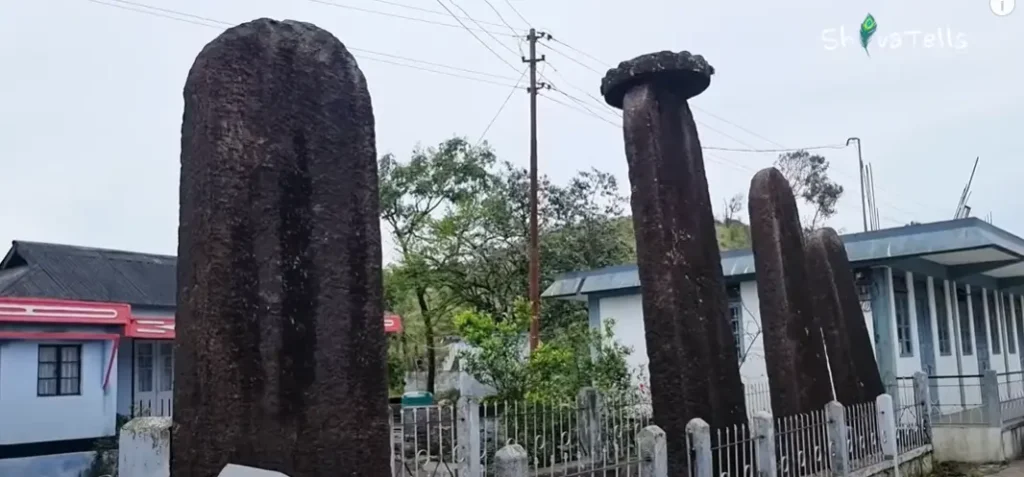
My journey to the Mawsymai Caves and the monoliths of Meghalaya left a deep impression on me. There’s something magical about this place—the connection between nature and history, the stories hidden in the stones, and the beauty of the landscape. I felt a sense of wonder that I hope everyone can experience when they visit Meghalaya.
So, if you ever find yourself wandering through the hills of Meghalaya, take a moment to look at the monoliths, listen to the stories they have to tell, and of course, explore the Mawsymai Caves. It’s a journey that will leave you inspired and full of wonder.
Until then, I’ll be sharing more stories of Meghalaya on my YouTube channel, ShivaTells. Stay tuned for more travel adventures!
Read Tribe Stories –
- Singing Love Songs: Discovering the Dimasa Tribe’s Majang Di Tradition (Assam)
- Wancho Tribe: 3 Superheros of Arunachal Pradesh’s Patkai Hills
Watch Meghalaya stories –
